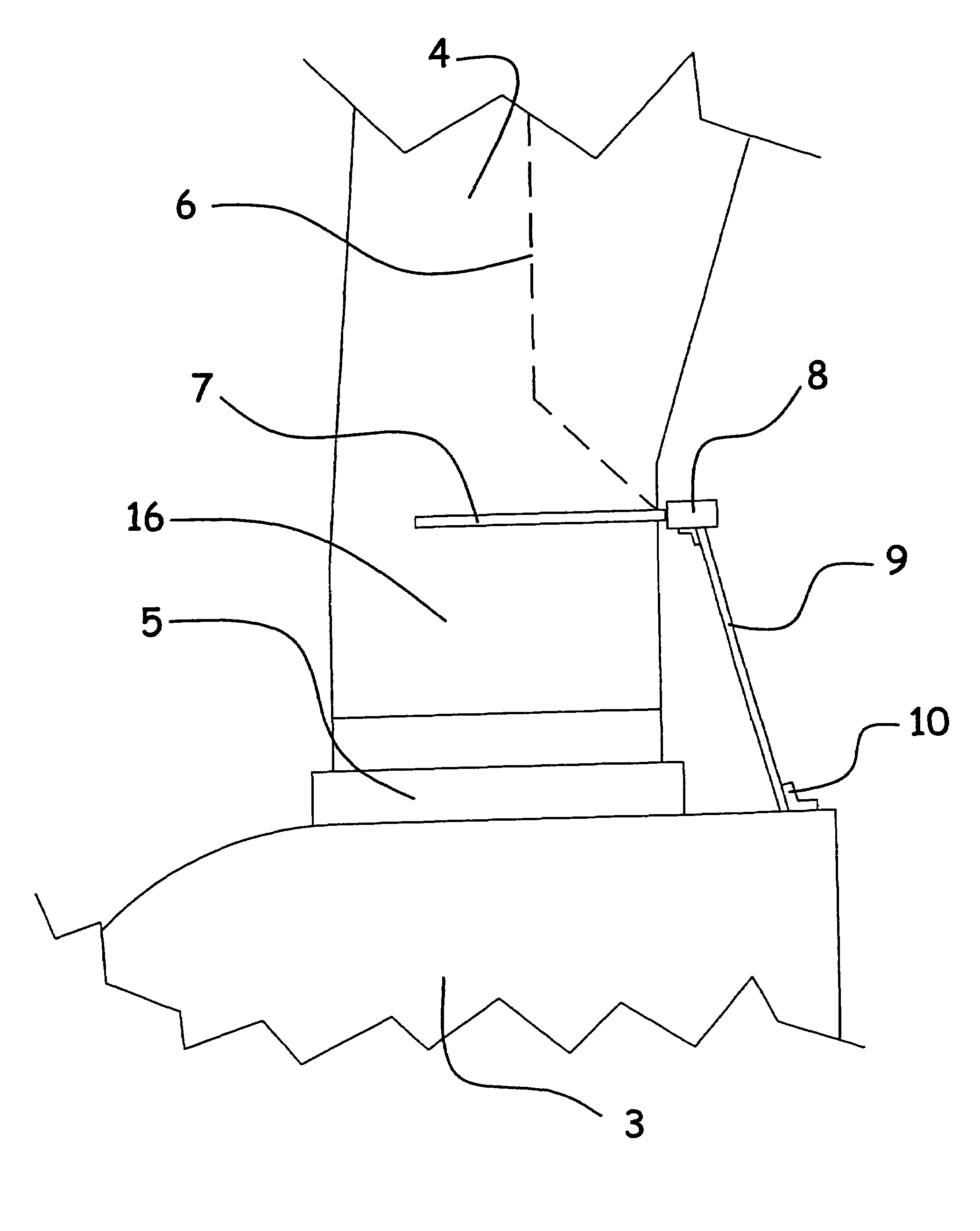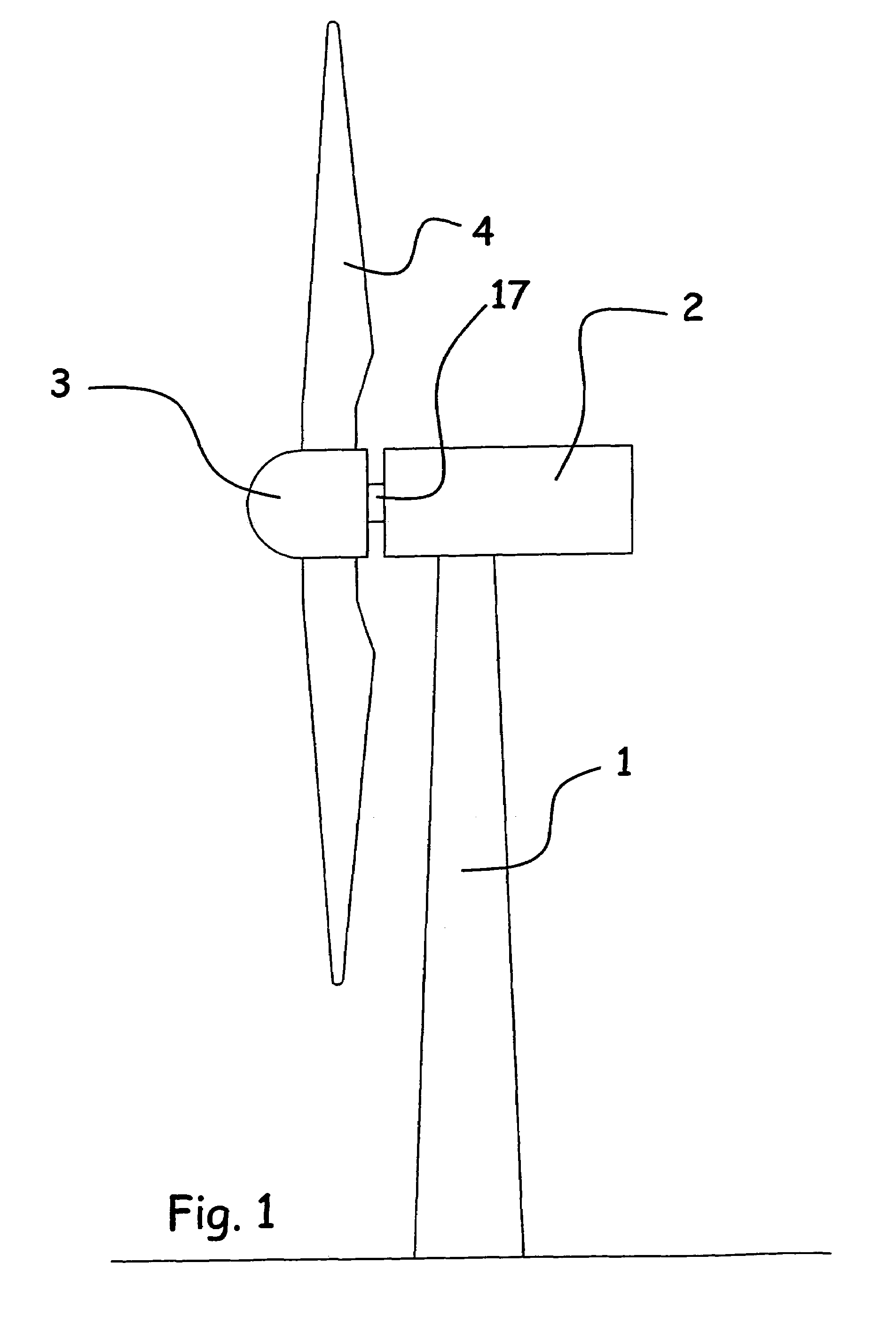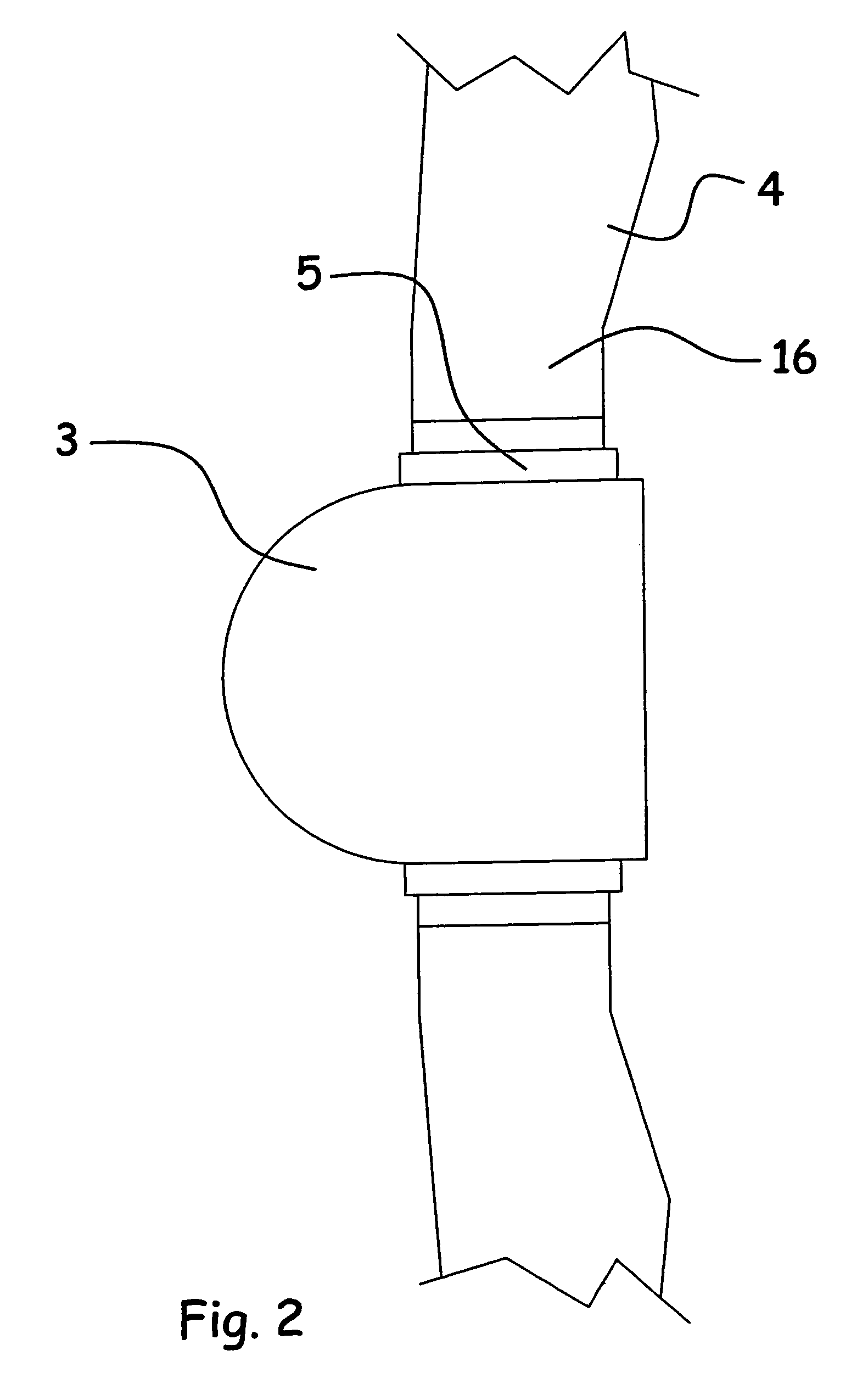Lightning protection of a pitch-controlled wind turbine blade
a technology of pitch control and wind turbine blades, which is applied in the direction of wind turbines, wind turbines, electric cable installations, etc., can solve the problem of weak electric resistan
- Summary
- Abstract
- Description
- Claims
- Application Information
AI Technical Summary
Benefits of technology
Problems solved by technology
Method used
Image
Examples
Embodiment Construction
[0045]FIG. 1 shows a wind turbine where a nacelle / turbine top section 2 is conventionally mounted on the tower 1, a generator and a gear being mounted in said nacelle. A rotor shaft 17 projects from the nacelle 2, the rotor hub 3 of the wind turbine being mounted on said rotor shaft. The blades 4 of the wind turbine are mounted on the rotor hub 3.
[0046]FIG. 2 shows a detailed view of a rotor hub 3 for a wind turbine as well as portions of two blades 4. In the structure shown, the blades 4 and the rotor hub 3 are connected through pitch bearings 5, and the position of the blades 4 is adjustable about their longitudinal axes, i.e. the pitch angle, by means of said bearings.
[0047]In order to intercept and guide a lightning strike to the ground, an inner lightning down-conductor 6 is mounted inside the blade 4, cf. FIG. 3, said lightning down-conductor being connected at the tip of the blade 4 to one or more lightning receptors not shown. Adjacent the pitch bearing 5, this inner lightni...
PUM
 Login to View More
Login to View More Abstract
Description
Claims
Application Information
 Login to View More
Login to View More - R&D
- Intellectual Property
- Life Sciences
- Materials
- Tech Scout
- Unparalleled Data Quality
- Higher Quality Content
- 60% Fewer Hallucinations
Browse by: Latest US Patents, China's latest patents, Technical Efficacy Thesaurus, Application Domain, Technology Topic, Popular Technical Reports.
© 2025 PatSnap. All rights reserved.Legal|Privacy policy|Modern Slavery Act Transparency Statement|Sitemap|About US| Contact US: help@patsnap.com



